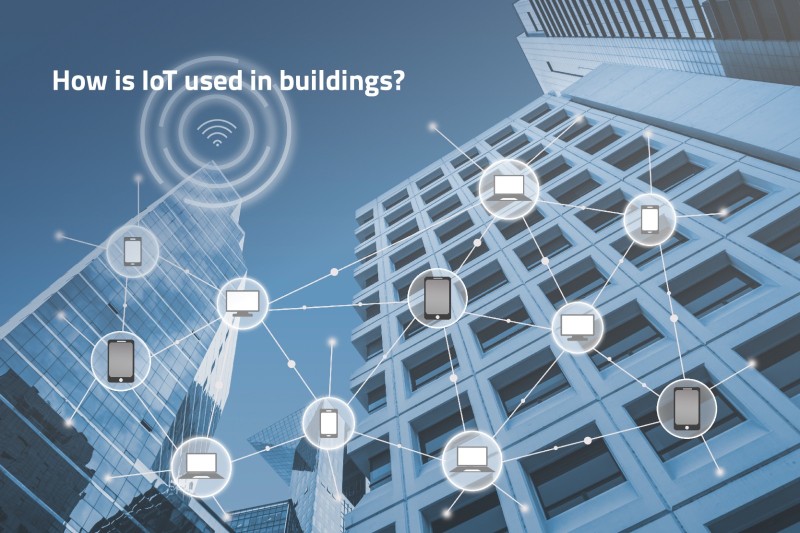It has been projected that by 2025, there will be around 41.6 billion active internet-connected devices in the world. The IoT (Internet of Things) has recently become a popular buzzword used by companies across various industries. What does this number mean for the real estate and construction industry?
With cities becoming more crowded, structures such as smart buildings play a critical role in helping with congestion through advanced technologies that enable building managers to better manage their spaces, assets, and resources. IoT technology can reduce energy consumption while increasing productivity and efficiency within buildings.
What is automation of buildings?
When you combine IoT technology with building automation software, it allows them to communicate efficiently with each other and eliminate human error. Devices such as HVAC systems, surveillance cameras, lights, and sensors can communicate with the main building management unit to deliver data needed to properly control these systems and provide a safe environment for occupants.
All of this information is consolidated and organized into an easy-to-use dashboard that can be accessed from anywhere through a mobile device or web browser. In addition to increasing energy efficiency, using technologies that are found in smart buildings can address issues regarding health
Buildings that run with the help of digital connectivity can be called automated buildings. These systems make use of advanced data analytics and machine learning. While they offer several benefits, one of the most popular advantages of automating buildings is energy efficiency. The IoT technology is expected to change the way we live, work and communicate. While IoT impacts building automation in several ways, in this article, let us deep dive into two ways in which IoT upgrades buildings.
IoT for heating and ventilation
In the field of HVAC, the Internet of Things (IoT) is an emerging technology that allows multiple devices to communicate with each other. This technology can be applied in HVAC systems in many ways.
The IoT is based on the concept of connecting various physical objects to a network, which allows them to exchange information through various communication methods, such as radio waves and electricity. This makes it possible for these objects to communicate with each other and share data about their status or behaviour.
HVAC systems are a perfect example of how IoT can be used to improve operational efficiency and enhance customer satisfaction. The following are some ways this new technology can be applied in HVAC:
- Automatic control: Using sensors embedded in HVAC equipment, it’s possible for a system to monitor environmental conditions at any point in time and take appropriate action without human intervention or input from users or managers
- Remote monitoring: A system can automatically monitor equipment status using sensors connected directly to the equipment or through wireless connections between equipment and computers
- Smart app control: Using smart apps on smartphones or tablets, users can remotely control equipment functions such as thermostat settings
IoT for building security and surveillance
Building security and surveillance is an increasingly important aspect of building management that has been highlighted in the media over recent years. The need to protect buildings from fire, theft and vandalism has led to the development of a range of systems designed to mitigate risks. These include intruder alarms, CCTV cameras, locks and access control points.
However, these systems are often used in isolation without considering their interaction with each other or the wider context in which they operate. This can result in ineffective security measures as well as potential legal issues if there are any gaps between what is required by law and what is actually implemented on site.
IoT (Internet of Things) offers a potential solution for this problem by enabling organisations to collect data from their existing infrastructure and integrate it with third-party solutions via the cloud.
IoT is the future
IoT is ushering in the future of buildings. Used in an ever-expanding array of applications in buildings, IoT is not only used for energy efficiency and conservation but also for indoor positioning and navigation.
Messung develops seamless IoT solutions that serve the occupant’s comfort and convenience while making your building automation and operation effective. With an automated solution, you can now book meeting rooms, monitor equipment remotely and do much more. Delve into a wealth of automated possibilities with Messung’s Internet-connected devices.

